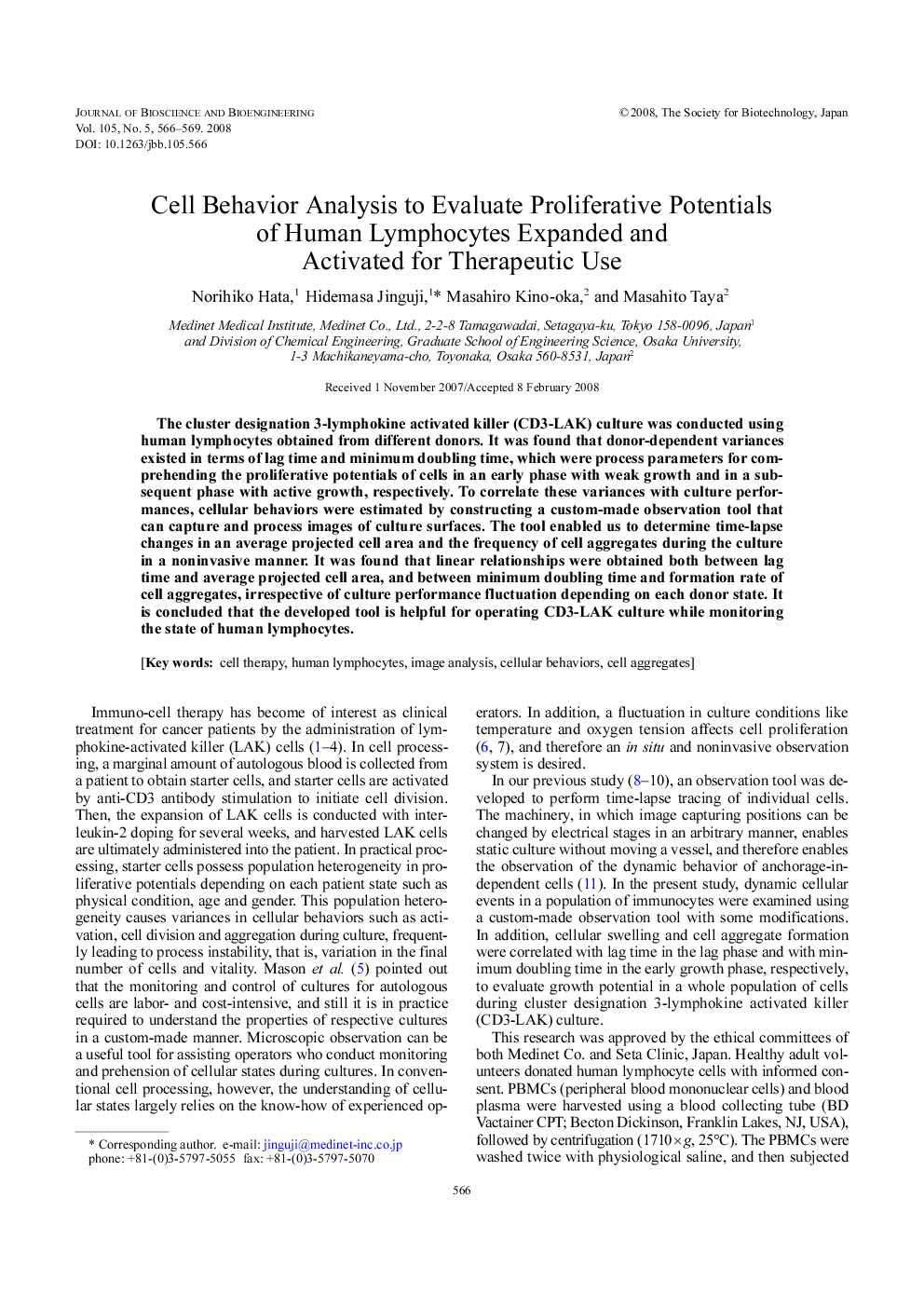| Article ID | Journal | Published Year | Pages | File Type |
|---|---|---|---|---|
| 22098 | Journal of Bioscience and Bioengineering | 2008 | 4 Pages |
The cluster designation 3-lymphokine activated killer (CD3-LAK) culture was conducted using human lymphocytes obtained from different donors. It was found that donor-dependent variances existed in terms of lag time and minimum doubling time, which were process parameters for comprehending the proliferative potentials of cells in an early phase with weak growth and in a subsequent phase with active growth, respectively. To correlate these variances with culture performances, cellular behaviors were estimated by constructing a custom-made observation tool that can capture and process images of culture surfaces. The tool enabled us to determine time-lapse changes in an average projected cell area and the frequency of cell aggregates during the culture in a noninvasive manner. It was found that linear relationships were obtained both between lag time and average projected cell area, and between minimum doubling time and formation rate of cell aggregates, irrespective of culture performance fluctuation depending on each donor state. It is concluded that the developed tool is helpful for operating CD3-LAK culture while monitoring the state of human lymphocytes.
